Here are the steps to guide you through configuring and setting up a Windows server on Kamatera. First, you’ll need to create your Kamatera account. Then, using the Kamatera management console, you’ll sign up for an account, log in using your new credentials, and create a server that is preconfigured with the Windows operating system.
1. Create an Account on Kamatera
Go to console.kamatera.com and sign up for an account by providing the following information:
- Verify Your Email: Click the verification link sent to your email by Kamatera.
- Password: Enter your password.
- Repeat Password: Re-enter your password and click Create Account.
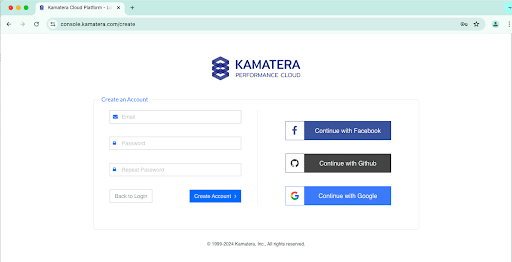
2. Access the Kamatera Management Console
Log In: Enter your credentials to access the Kamatera management console.
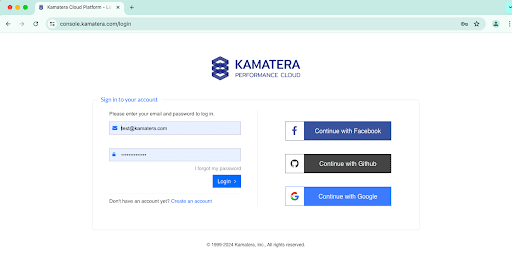
Click login.
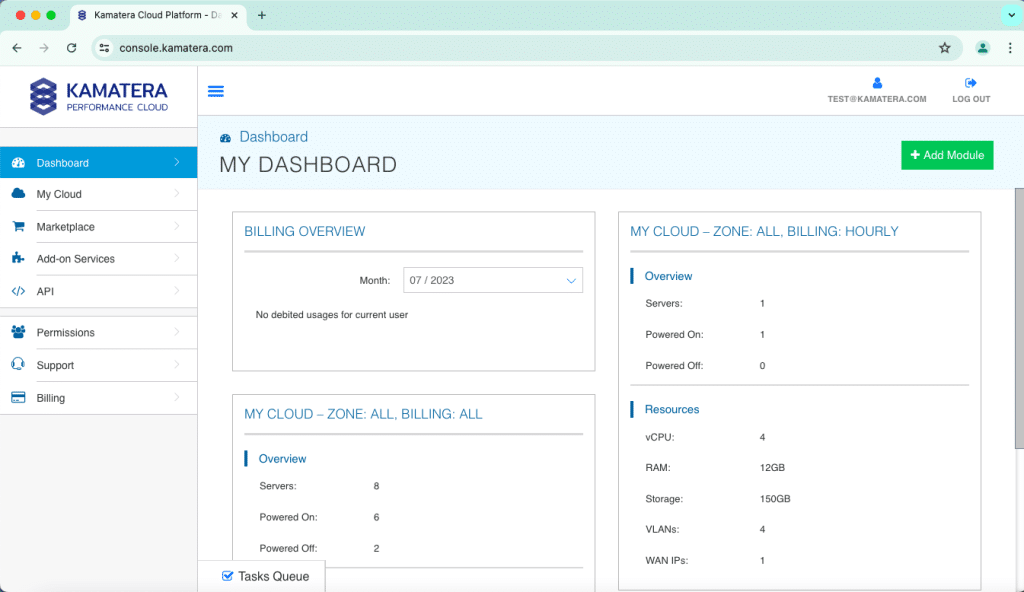
- Navigate to My Cloud on left hand side.
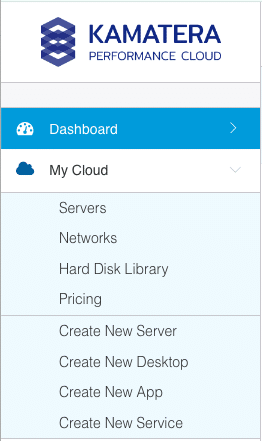
- Select Servers.
- On the left-hand side navigation menu, click on Create New Server or use the Create New Server option on the right-hand side.
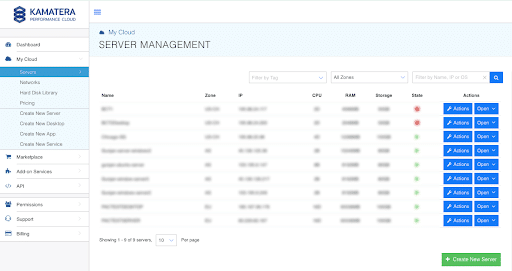
Choose zone.
- Choose the Zone according to your requirements.
- Asia
- North America
- Europe
- Middle East
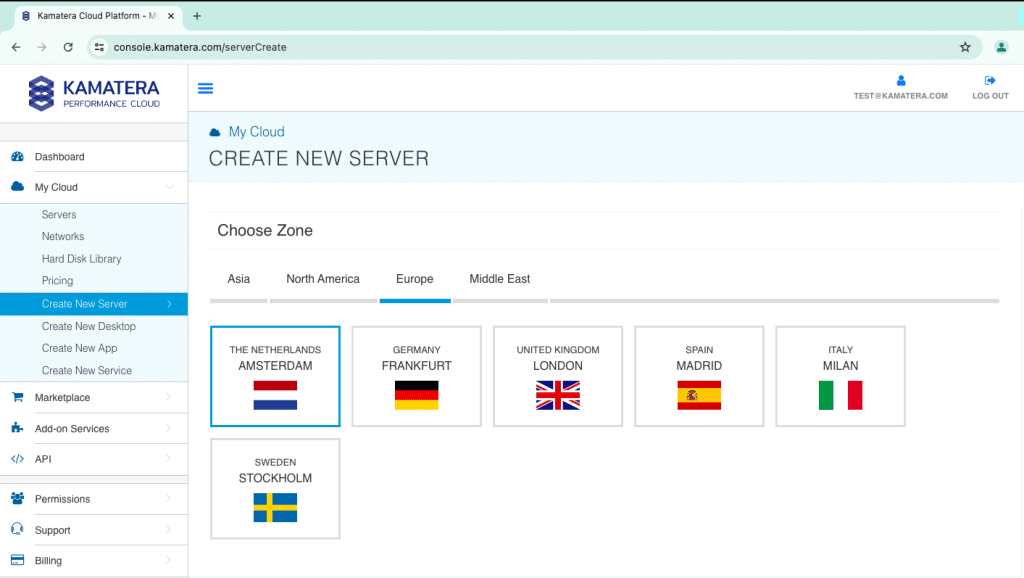
- Depending on the zone you select, the available countries will be displayed.
Use case: For this configuration, we used the Asia server domain for our Windows Server.
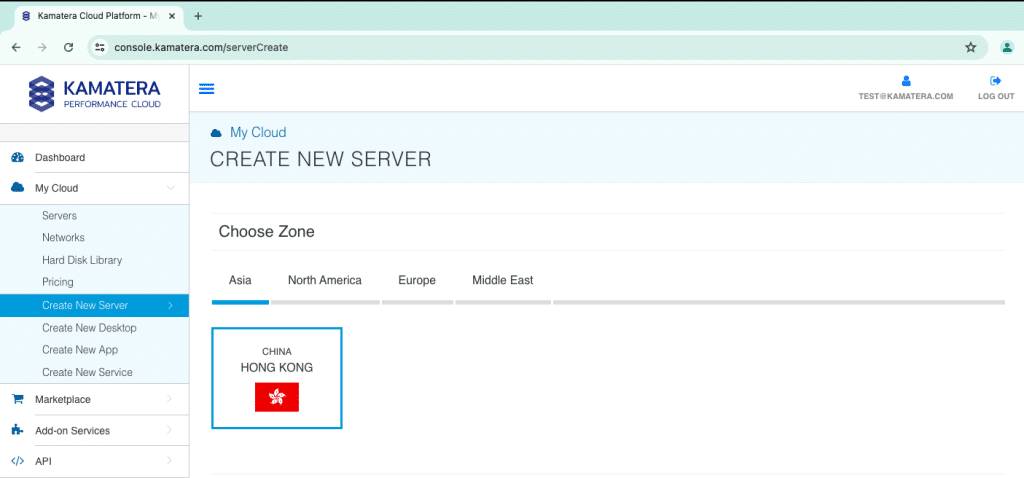
Choose an image.
Kamatera offers a variety of App and Server Images to help users set up preconfigured resources. Users can explore options such as
- Server OS Images
- Desktop OS Images
- App Images
- Service Images
- My Private Images
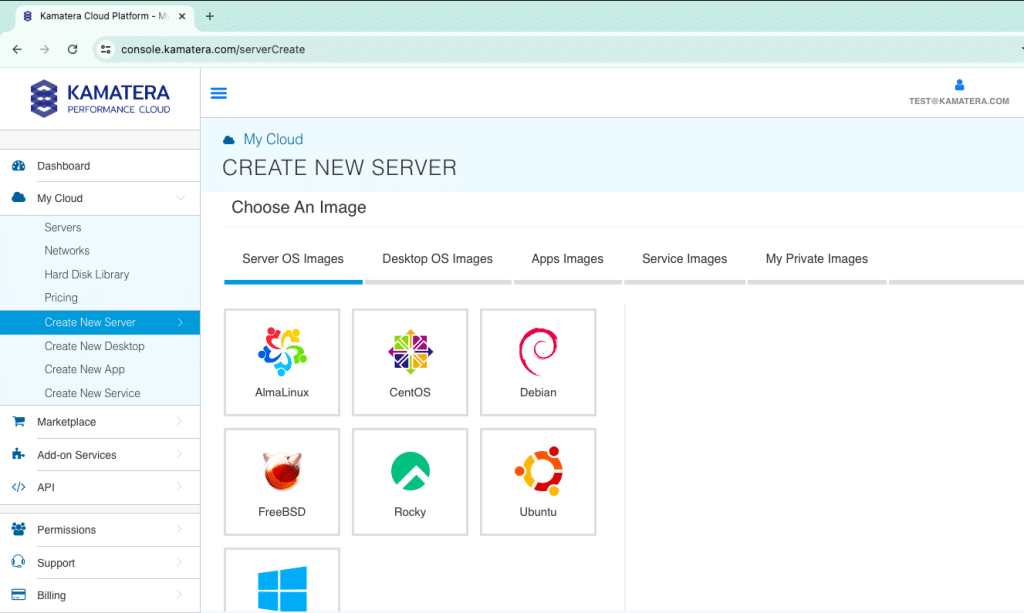
Choose Server OS Images and select Windows Server.
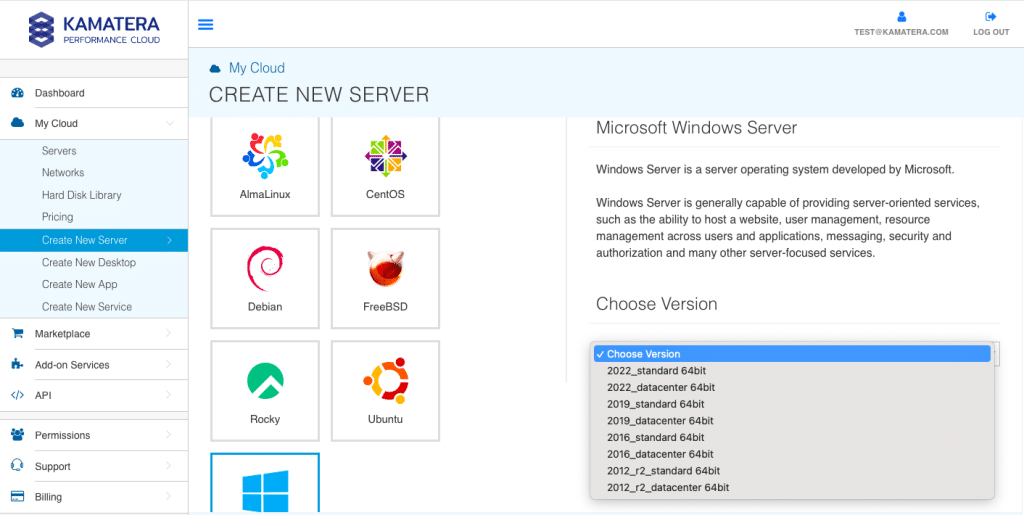
4. In Choose Version, select the latest version of Microsoft Windows Server (2022_standard 64-bit).
Upon selecting the version, the License prices are displayed.
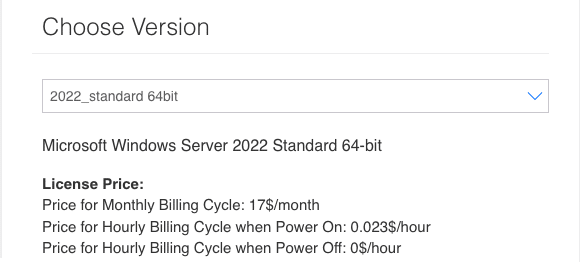
Toggle the Detailed view button enable to view the detailed description, including the price.
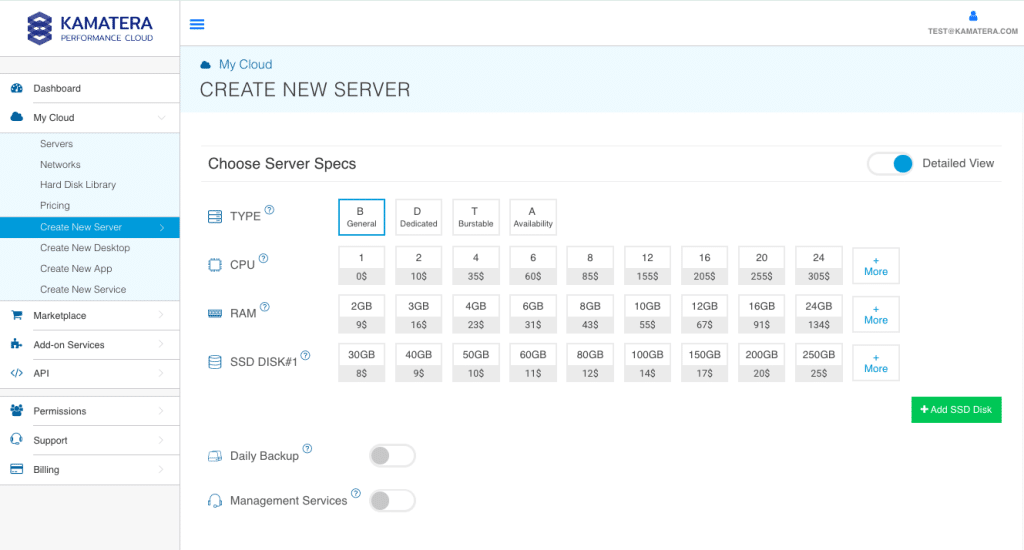
- Choose Server Specs
| Field | Description |
| Type | Type B-General Purpose– Server CPU are assigned to a dedicated physical CPU thread with reserved resources guaranteed.
Type D–Dedicated – –Server CPU are assigned to a dedicated physical CPU Core (2 threads) with reserved resources guaranteed. Type T – Burst – Server CPU are assigned to a dedicated physical CPU thread with reserved resources guaranteed. Exceeding an average usage of 10% will be extra charged for CPUs usage consumption. Type A-Availability- Server CPUs are assigned to a non-dedicated physical CPU thread with no resources guaranteed. Note: More information on CPU types is available on the My Cloud- Pricing page. |
| CPU | Choose the number of vCPUs that will be installed on the server. Type B/T can be configured with upto 104 vCPUs per server. Based on Intel’s latest Xeon Processors, 2.7 GHz+. |
| RAM | Choose the amount of RAM that will be installed on the server. Type B/T/D can be configured with upto 512GB RAM per server. |
| NVMe SSD DISK | Choose NVMe SSD Storage Size. You can add upto 15 NVMe SSD Disk. NVMe SSD Storage includes unlimited IOPS and unlimited storage bandwidth, free of charge. |
| Daily Backup | Toggle the switch to enable extended daily backups of your server’s storage to external backup storage. |
| Management Services | Toggle the switch to enable Management Services to the server’s operating system by Kamatera Technical Support Team. |
- Choose Networking
You can select the network they wish to use, whether it’s a public Internet network or a private local network.
Simple Mode

| Field | Description |
| Public Internet Network | Check to connect the server to a network interface connected to Public Internet Network. |
| Private Local Network | Check to connect the server to a network interface connected to Private Local Network. |
Advanced Mode

| Field | Description |
| NIC #1 | Select WAN from the options available in the drop-down menu.
· WAN · LAN · New LAN Select auto from the options available in the drop-down menu. · Auto · Network Select auto from the options available in the drop-down menu. · Auto · IP |
| WAN Traffic | Select 5000 GB per month/ on 10 Gbit per second port. |
- Advanced Configuration
Hide – If you want to hide the advanced configuration.
Show – If you want to see the advanced configuration.
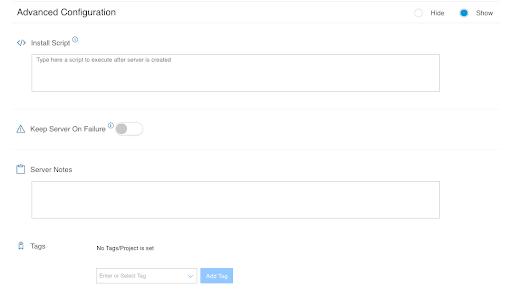
| Field | Description |
| Install Script | Enter the script here to execute once the server is created.
Note: For Windows system use Power Shell. |
| Keep Server On Failure | Do not terminate server if Start up Script or Provisioning Fails |
| Server Notes | Enter any server notes to be noted. |
| Tags | Select the Tags from the drop-down menu and click Add. |
- Finalize Settings
Finalize settings by setting the password, re-validating it, selecting the number of servers, specifying the server name, and enabling the Power On Servers option.

| Field | Description |
| Password | Select password
Password allowed characters: a-z, A-Z,0-9 !@#$^&*()~ and must meet the following requirements: · At least 14 characters · At most 32 characters · At least one lowercase character · At least one upper case character · At least one number · Includes allowed characters only |
| Validate | Re-enter the password to validate. |
| Servers | Select the number of servers you want. |
| Name # 1 | Enter the name of the server. |
| Power On Servers | Switch on the toggle button to see the details |
Note: Once you enter your details in Finalize Settings, you can select either the Monthly Billing Cycle or Hourly Billing, depending on your requirements.
- Billing Cycle and Pricing

You can choose between the Monthly Billing Cycle and Hourly Billing Cycle.
Note: The Server Summary displays the location, operating system (including server specifications), add-on services, servers, and pricing.
Click Create Server.
The server will be created and will appear on the Server Management screen.
Once the server is created, click Open.
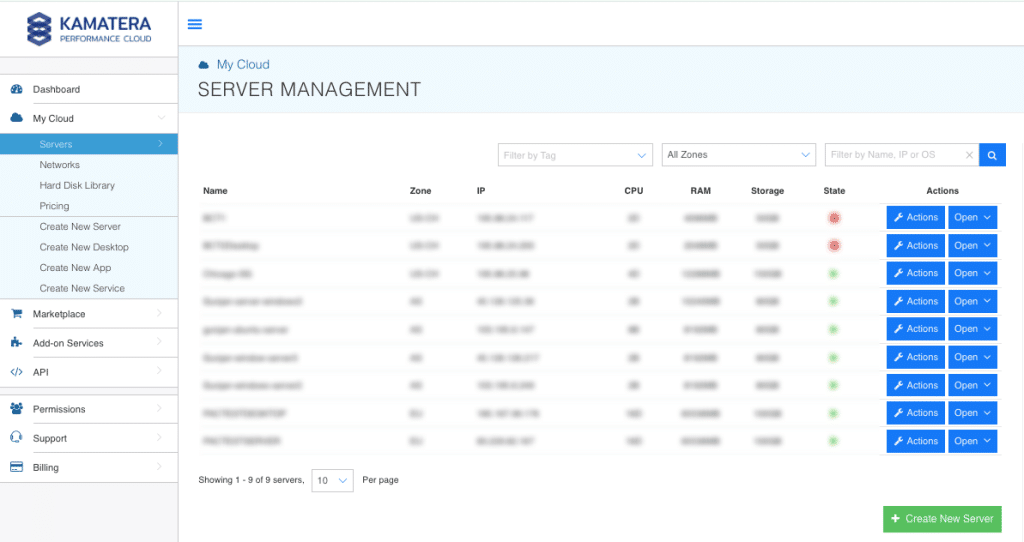
- To configure new settings, click on the Open button, and a new screen will open.
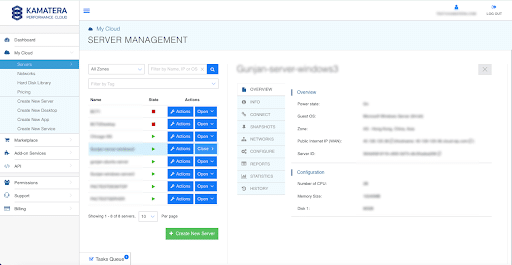
- Click on Connect, and then click on Open Remote Console.
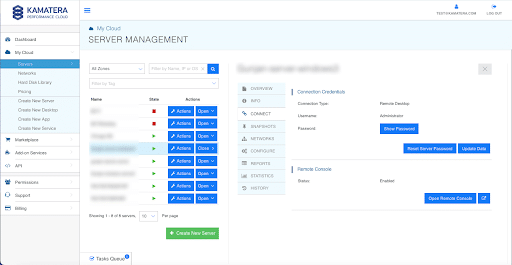
- A new tab opens, connecting to the new server and displaying the Server Manager Dashboard. Here, you can configure the local server by selecting
- Add roles and features: Install roles, role services, and features based on the computing needs of your organization.
- Add servers: Search for other computers using the Active Directory Domain Services.
- Create a server group: You can create a server group from the server pool.
- Connect this server to cloud services: Integrate this server with cloud services.
Congratulations! You have successfully opened an account and configured a Windows server on the Kamatera platform.
